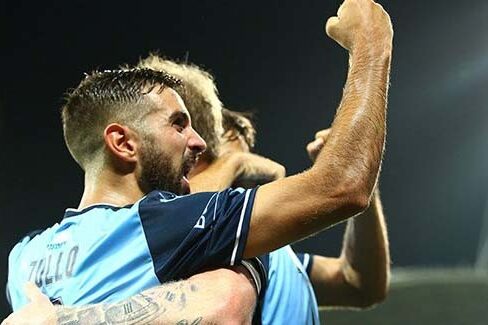Almost every club is utilizing the benefits that come from using data and video to develop their players, scout opponents and improve their teams.
When Doug Kors joined Sydney FC as an analyst in late 2014, he became just the third individual to hold that position in the A-League. The rest of the clubs hadn’t quite caught on to the impact that video analysis could have on a club.
It’s taken just a few years to completely reshape that thinking. Now nearly every club employs at least one analyst, and the leading clubs are now assembling departments with multiple positions and different roles.
“I think there is a much greater understanding that the different support areas of a football club –whether it be medial, sport science, analysis– are crucial to being successful,” Kors said. ‘In the past, these areas have often been seen as something that may add value to a football club, but are now being viewed as necessities.”
There’s a reason so many clubs are going all in on analysis. According to Jason Wickham, an analyst for the Brisbane Roar, technology has become an integral part of everyday coaching within the club. When clubs first starting working with analysis years ago, it could be tough to get video feedback to coaches and players in a timely manner.
But that’s no longer the case. Sportscode and Hudl allow analysts to quickly and easily distribute video to various team members, along with comments and drawings to really drive their points home.
“These days coaches and players want feedback instantly to be able to provide an advantage over the opposition,” Wickham said. “Video allows the players to see and understand exactly what the coach’s point is. When showing the players video clips of the opposition, they can get a much better understanding of player movements and team patterns when they see two or three examples.”
Like Kors, Aaron D’Antino was a rare breed when he joined the Melbourne Victory as the Head of Performance Analysis is 2014. But in just a few years, he’s seen the power of analysis multiply and have a great effect on the league.
“Aside from actual tactical training on the park, I believe the use of analysis is the most powerful tool a coach can leverage in bringing his vision and philosophy to life,” Dantino said. “For me, particularly when it comes feedback and learning, nothing beats the transparent, objective data video provides to both players and management.”
“Young players are heavily reliant on technology which gives the analysts role more and more opportunity to have an impact on the players,” added Donna Rice, the manager of Performance Analysis at Melbourne City FC, said. “With apps such as Hudl, we can increase the amount of information we are giving the players, or reinforce previous information without large increase in workload.
Analysts are tasked with providing insightful information to both coaches and players. This comes in the form of video and data. They uncover trends about their own club, help players develop by showing them what corrections need to be made, and find weaknesses in the opposition.
“If coaches are spending their entire day analysing a game to identify two or three football problems, it is a very ineffective way of using their expertise,” Kors said. “Using Sportscode, we can generate data reports that are linked to video. This help raise some red flags that indicate there is something that may need to be reviewed.
It’s also crucial for younger players, who can watch the first teamers to study tactics and set pieces and mold their games after the pros. Every level of the club benefits from video analysis, which is why the importance of the profession has ballooned recently.
“Analysis support has become a major part of all leading football clubs in the world,” James Slaveski, analyst for the Western City Wanderers, said. “Coaches are relying more and more on their analysts to provide information and recommendations and this will only continue.”
